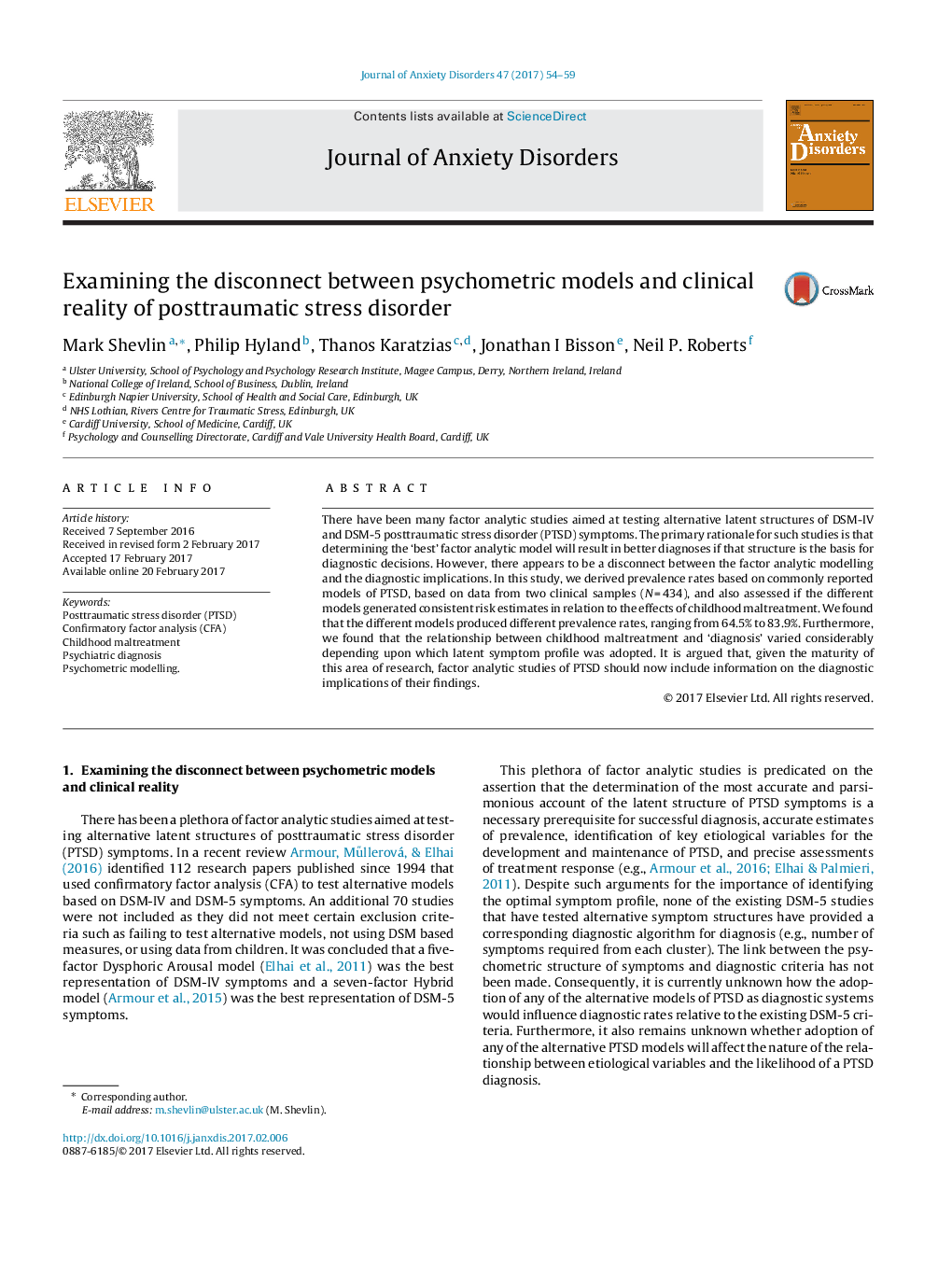| کد مقاله | کد نشریه | سال انتشار | مقاله انگلیسی | نسخه تمام متن |
|---|---|---|---|---|
| 5038870 | 1473031 | 2017 | 6 صفحه PDF | دانلود رایگان |
- There have been many factor analytic studies of DSM-IV and DSM-5 PTSD symptoms.
- Consistent with the extant confirmatory factor analytic findings, we found that the Anhedonia and Hybrid models were the best models.
- Different factor analytic models of PTSD are associated with different prevalence estimates.
- The strength of association between childhood trauma and PTSD varied considerably depending upon which model was adopted.
There have been many factor analytic studies aimed at testing alternative latent structures of DSM-IV and DSM-5 posttraumatic stress disorder (PTSD) symptoms. The primary rationale for such studies is that determining the 'best' factor analytic model will result in better diagnoses if that structure is the basis for diagnostic decisions. However, there appears to be a disconnect between the factor analytic modelling and the diagnostic implications. In this study, we derived prevalence rates based on commonly reported models of PTSD, based on data from two clinical samples (NÂ =Â 434), and also assessed if the different models generated consistent risk estimates in relation to the effects of childhood maltreatment. We found that the different models produced different prevalence rates, ranging from 64.5% to 83.9%. Furthermore, we found that the relationship between childhood maltreatment and 'diagnosis' varied considerably depending upon which latent symptom profile was adopted. It is argued that, given the maturity of this area of research, factor analytic studies of PTSD should now include information on the diagnostic implications of their findings.
Journal: Journal of Anxiety Disorders - Volume 47, April 2017, Pages 54-59
